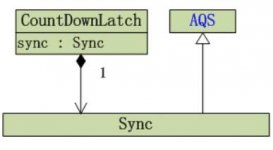srping注解方式防止重复提交原理分析,供大家参考,具体内容如下
方法一: springmvc使用token
使用token的逻辑是,给所有的url加一个拦截器,在拦截器里面用java的uuid生成一个随机的uuid并把这个uuid放到session里面,然后在浏览器做数据提交的时候将此uuid提交到服务器。服务器在接收到此uuid后,检查一下该uuid是否已经被提交,如果已经被提交,则不让逻辑继续执行下去…**
1 首先要定义一个annotation: 用@retention 和 @target 标注接口
|
1
2
3
4
5
6
|
@target(elementtype.method)@retention(retentionpolicy.runtime)public @interface token { boolean save() default false; boolean remove() default false;} |
2 定义拦截器tokeninterceptor:
|
1
2
3
4
5
6
7
8
9
10
11
12
13
14
15
16
17
18
19
20
21
22
23
24
25
26
27
28
29
30
31
32
33
34
35
36
37
38
39
40
41
42
|
public class tokeninterceptor extends handlerinterceptoradapter {@overridepublic boolean prehandle(httpservletrequest request, httpservletresponse response, object handler) throws exception { if (handler instanceof handlermethod) { handlermethod handlermethod = (handlermethod) handler; method method = handlermethod.getmethod(); token annotation = method.getannotation(token.class); if (annotation != null) { boolean needsavesession = annotation.save(); if (needsavesession) { request.getsession(false).setattribute("token", uuid.randomuuid().tostring()); } boolean needremovesession = annotation.remove(); if (needremovesession) { if (isrepeatsubmit(request)) { return false; } request.getsession(false).removeattribute("token"); } } return true; } else { return super.prehandle(request, response, handler); }}private boolean isrepeatsubmit(httpservletrequest request) { string servertoken = (string) request.getsession(false).getattribute("token"); if (servertoken == null) { return true; } string clinettoken = request.getparameter("token"); if (clinettoken == null) { return true; } if (!servertoken.equals(clinettoken)) { return true; } return false;}} |
spring mvc的配置文件里加入:
|
1
2
3
4
5
6
7
8
9
10
11
12
13
14
15
16
17
18
19
20
21
22
|
<mvc:interceptors> <!-- 使用bean定义一个interceptor,直接定义在mvc:interceptors根下面的interceptor将拦截所有的请求 --> <mvc:interceptor> <mvc:mapping path="/**"/> <!-- 定义在mvc:interceptor下面的表示是对特定的请求才进行拦截的 --> <bean class="****包名****.tokeninterceptor"/> </mvc:interceptor> </mvc:interceptors>@requestmapping("/add.jspf")@token(save=true)public string add() { //省略 return tpl_base + "index";} @requestmapping("/save.jspf")@token(remove=true)public void save() { //省略} |
用法:
在controller类的用于定向到添加/修改操作的方法上增加自定义的注解类 @token(save=true)
在controller类的用于表单提交保存的的方法上增加@token(remove=true)
在表单中增加 用于存储token,每次需要报token值传入到后台类,用于从缓存对比是否是重复提交操作
方法二:springboot中用注解方式
每次操作,生成的key存放于缓存中,比如用google的gruava或者redis做缓存
定义annotation类
|
1
2
3
4
5
6
7
8
9
10
11
12
13
14
15
16
17
18
|
@target(elementtype.method)@retention(retentionpolicy.runtime)@documented@inheritedpublic @interface locallock { /** * @author fly */ string key() default ""; /** * 过期时间 todo 由于用的 guava 暂时就忽略这属性吧 集成 redis 需要用到 * * @author fly */ int expire() default 5;} |
设置拦截类
|
1
2
3
4
5
6
7
8
9
10
11
12
13
14
15
16
17
18
19
20
21
22
23
24
25
26
27
28
29
30
31
32
33
34
35
36
37
38
39
40
41
42
43
44
45
46
47
|
@aspect@configurationpublic class lockmethodinterceptor { private static final cache<string, object> caches = cachebuilder.newbuilder() // 最大缓存 100 个 .maximumsize(1000) // 设置写缓存后 5 秒钟过期 .expireafterwrite(5, timeunit.seconds) .build(); @around("execution(public * *(..)) && @annotation(com.demo.testduplicate.test1.locallock)") public object interceptor(proceedingjoinpoint pjp) { methodsignature signature = (methodsignature) pjp.getsignature(); method method = signature.getmethod(); locallock locallock = method.getannotation(locallock.class); string key = getkey(locallock.key(), pjp.getargs()); if (!stringutils.isempty(key)) { if (caches.getifpresent(key) != null) { throw new runtimeexception("请勿重复请求"); } // 如果是第一次请求,就将 key 当前对象压入缓存中 caches.put(key, key); } try { return pjp.proceed(); } catch (throwable throwable) { throw new runtimeexception("服务器异常"); } finally { // todo 为了演示效果,这里就不调用 caches.invalidate(key); 代码了 } } /** * key 的生成策略,如果想灵活可以写成接口与实现类的方式(todo 后续讲解) * * @param keyexpress 表达式 * @param args 参数 * @return 生成的key */ private string getkey(string keyexpress, object[] args) { for (int i = 0; i < args.length; i++) { keyexpress = keyexpress.replace("arg[" + i + "]", args[i].tostring()); } return keyexpress; }} |
controller类引用
|
1
2
3
4
5
6
7
8
9
10
|
@restcontroller@requestmapping("/books")public class bookcontroller { @locallock(key = "book:arg[0]") @getmapping public string save(@requestparam string token) { return "success - " + token; }} |
以上就是本文的全部内容,希望对大家的学习有所帮助,也希望大家多多支持服务器之家。
原文链接:https://blog.csdn.net/xdy3008/article/details/84452587















